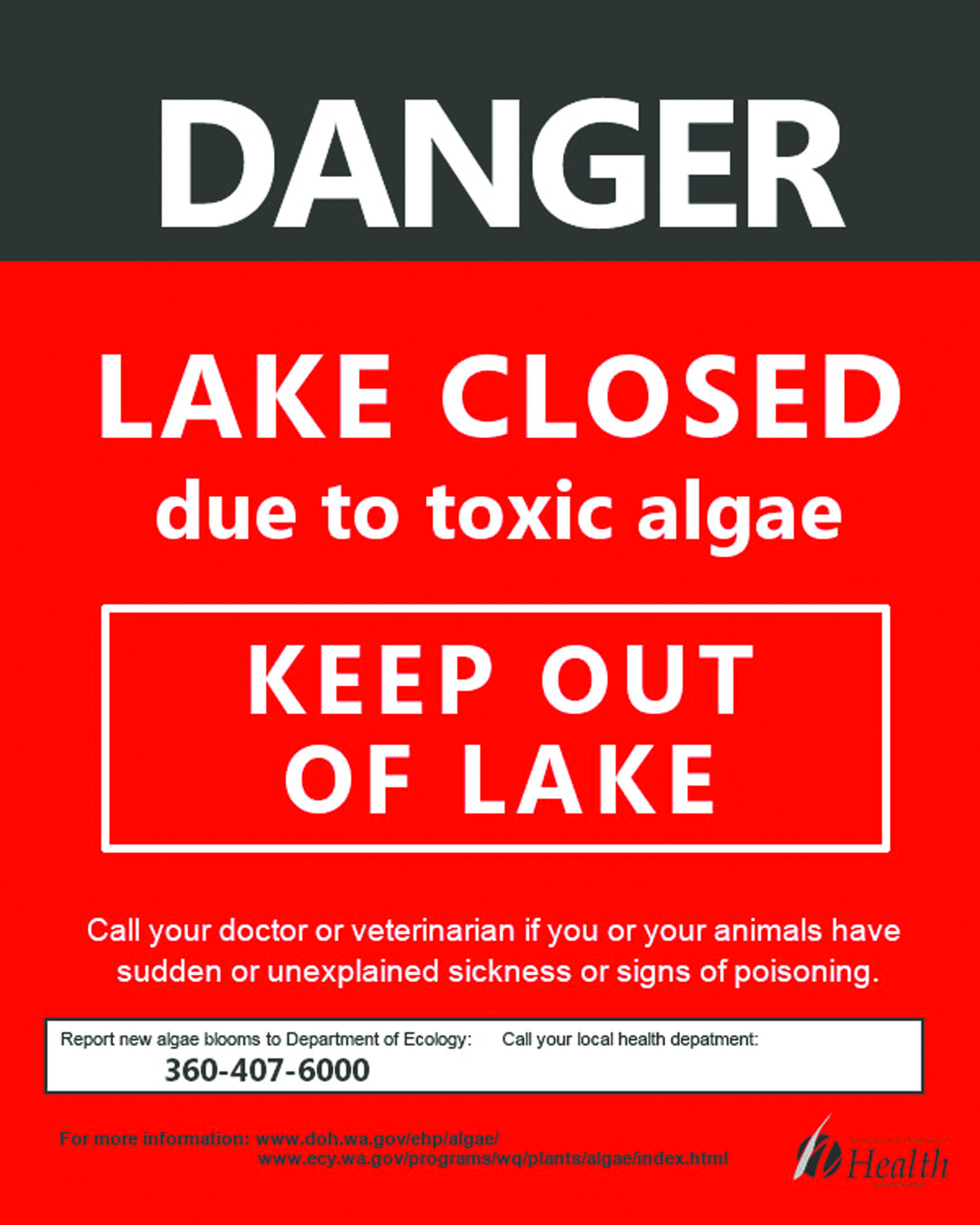PORT TOWNSEND — Within a period of a week, the level of a potent nerve toxin in Anderson Lake rose 990 times over the safe threshold, prompting its closure to fishing and all other water recreation..
Weekly testing since April 21 had found the level of anatoxin-a to be below the state recreational guideline of 1 microgram per liter of water.
But the latest tests of samples found 990 micrograms of the toxin, which can kill within four minutes of ingestion, per liter of water.
So, when the Jefferson County Jefferson County Public Health Department reported the results Thursday, Mike Zimmerman, the ranger in charge of Anderson Lake State Park, immediately set up closure signs.
That was only two weeks after the lake was opened for the state lowland fishing season April 26 when anglers converged on the popular trout lake to take what Zimmerman termed “a lot of excellent-sized fish” from the lake, located south of Port Townsend.
The 410-acre state park remains open to hiking, biking, horseback riding and other recreation. Only the 70-acre lake is closed.
The closure was not unexpected.
Levels of toxins — and subsequent closures and reopenings — since testing began in 2007 have yo-yoed since testing began in 2007, and now Anderson Lake’s fishing season is often measured in weeks.
Last year, the lake between Port Townsend and Chimacum was closed May 17 because of toxins, and it stayed closed the rest of the season until just last month.
In 2012, the lake was opened for the beginning of the fishing season the last Saturday in April but was closed May 3.
It was briefly reopened in August before high toxin levels prompted a new closure, and an unexpected peak in levels in September — unusual in the cooler fall months — kept the lake closed throughout the rest of the year.
In 2011, Anderson Lake was opened for the season in April, was closed June 10 and reopened Aug. 27.
When the lake was opened for the season in April 2010, it was the first time since 2008 — when the lake had set a world record of 172,640 micrograms per liter.
Hopes were high for a long fishing and boating season. But soaring toxin levels necessitated a closure only three weeks after opening.
The culprit is blue-green algae, a common plant all over the world that usually is benign.
Certain species of algae — such as the anabaena and aphanizomenon species that are now in Anderson Lake — sometimes suddenly will begin producing toxins.
Researchers don’t know why.
They know what fuels the growth of the algae: a combination of warm weather; long, sunny days; and a sufficient amount of nutrients such as phosphorus.
Algae growth, and the toxins it can produce, have been climbing worldwide, Zimmerman noted, and he hopes a solution will be found soon.
“Studies are being done to see if there is a common denominator and if we can perhaps find a way to address it.”
For more information about Jefferson County lakes, visit http://tinyurl.com/jeffersonlakequality or phone the office at 360-385-9444.
Toxin-producing blue-green algae has not been spotted in Clallam County. Report algae blooms in Clallam County by phoning 360-417-2258.

